Shubha Bhat’s early attempts to provide thirsty birds with water have now evolved into a sophisticated enterprise that draws dozens of species, both resident and migrant, to her yard
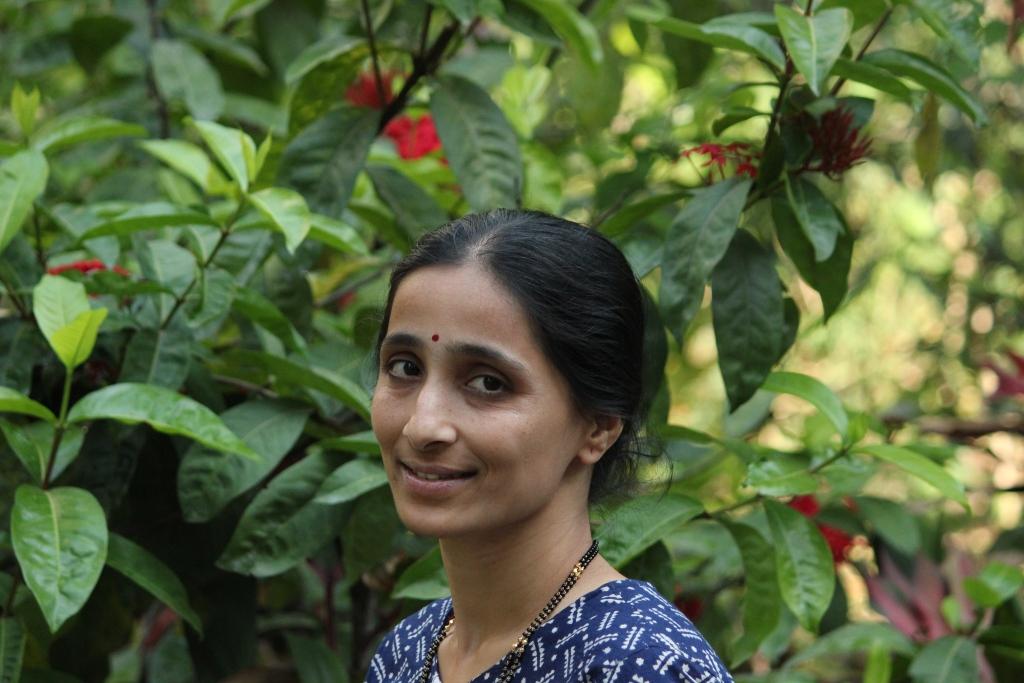
When Shubha Bhat got married 18 years ago, she found herself living in Bangalore. But life in the big city was starkly different from what she was used to in her village near Karkala in Karnataka, nestled in the Western Ghats. Here, in the midst of this bustling metropolis, she yearned for the wilderness that she grew up with. “When I came here, I had no place where I could go around. I spent my time indoors watching National Geographic. I missed nature,” she recalls. Fortunately for her, it was not long before she moved to the wooded campus of IISc, where her husband, Navakanta Bhat, works as a researcher.
Water for the thirsty
Despite being in the heart of the city, IISc’s campus is home to an extraordinary diversity of plant and animal life. “I started thinking about how these animals get water,” says Bhat. “So I kept a small earthen pot [filled with water] outside my house.” But she didn’t have much luck in luring any thirsty critters to her pot. A few years later, she and her husband relocated to another house in the campus, where she persisted with her experiment.
The change of house brought a change of fortune. First came the dogs, and it didn’t take long for crows to arrive. This house had a bigger yard, and also had a strategically located window in the kitchen through which she could spy on visitors to her garden.
Word got around quickly about the new watering hole in town
Frequent fliers
Word got around quickly about the new watering hole in town. Other birds followed: common mynas, jungle mynas, rock pigeons, spotted doves, Asian koels, red-whiskered bulbuls, greater coucals, and magpie-robins. Some would drink water, while others enjoyed a quick shower. Even mongooses began to make regular pit stops at her garden to take a gulp.
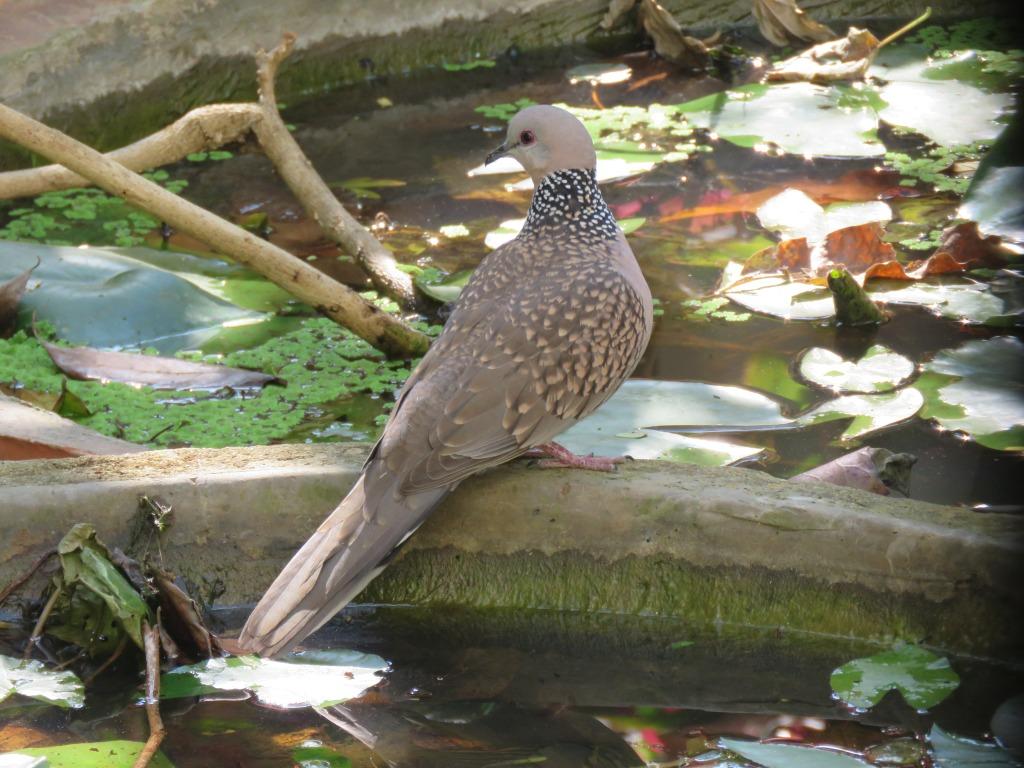
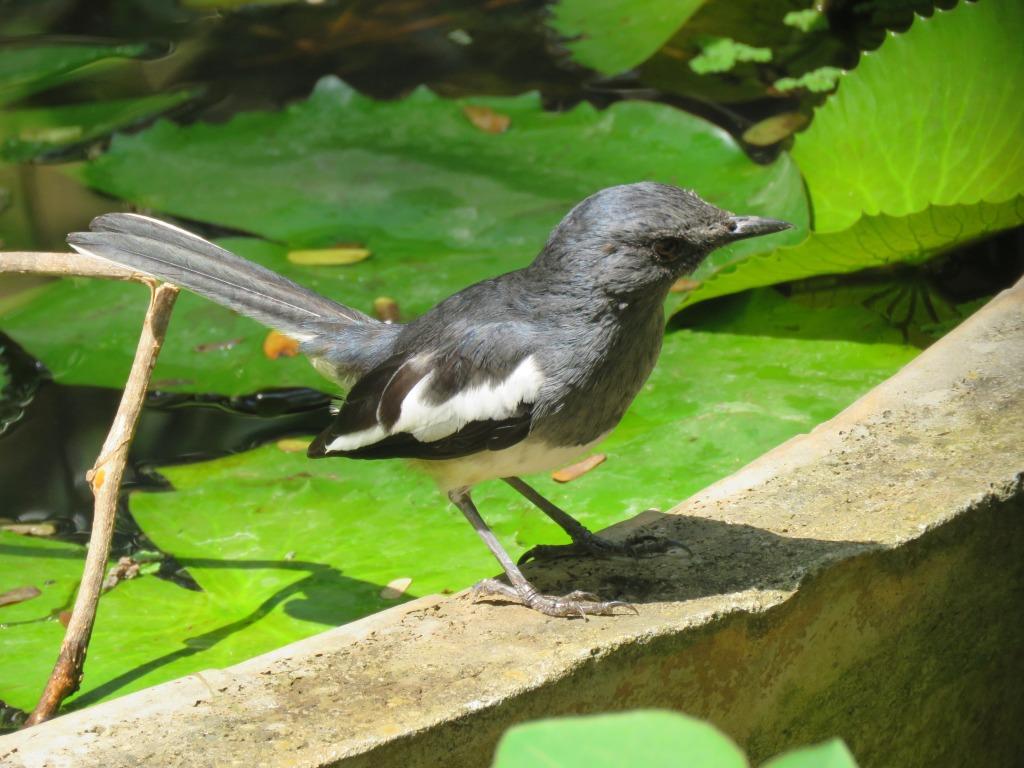
Working the garden
The early success encouraged Bhat to attempt new experiments. She added more pots, including three big cement baths and a hanging earthen pot. All along, she also worked on her garden to make it more attractive to birds.
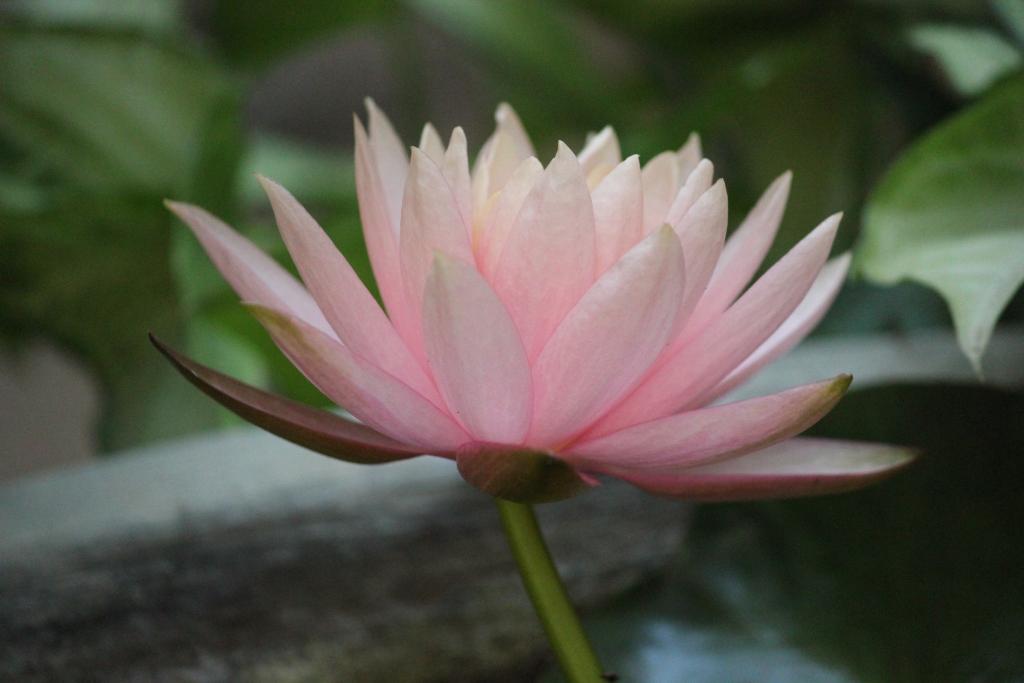
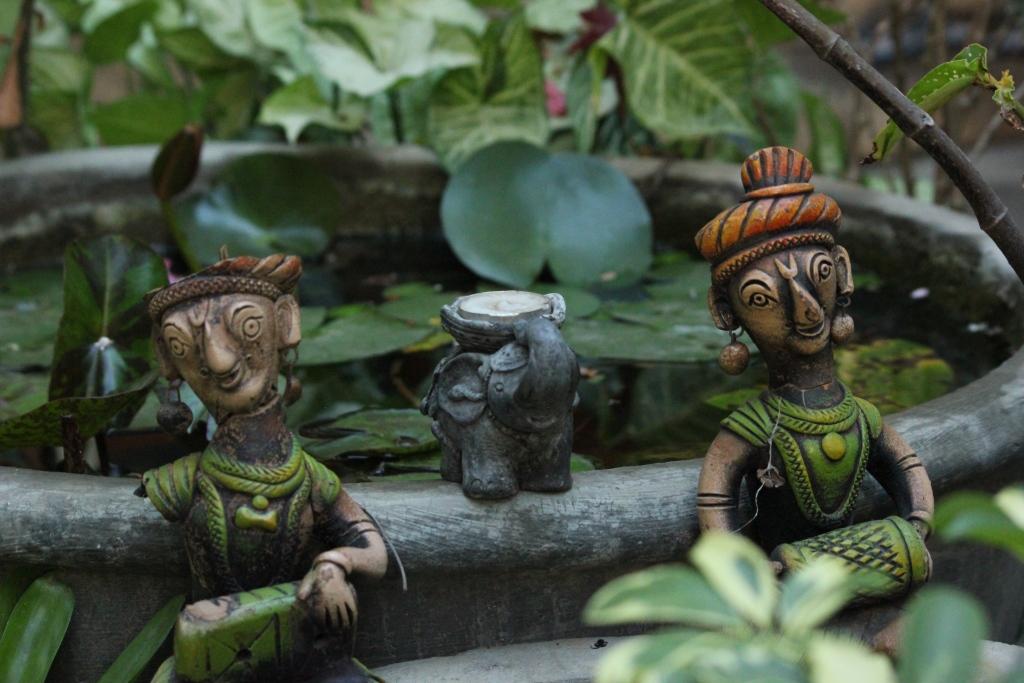
Bhat even introduced a few fish – guppies, kois and mollies – into the larger pots to keep in check the mosquitoes which were breeding in them. This had an unexpected consequence: kingfishers started to frequent her garden to dine on the fish.
This had an unexpected consequence: kingfishers started to frequent her garden to dine on the fish
More experiments
However, Bhat was unable to entice many other birds, especially smaller ones that she knew were around on campus, to her garden. “I felt that my birdbaths may not be safe for them because they are too deep,” she says. So she put bamboo twigs with small branches that rose out of the birdbaths on which small birds could perch, grew creepers adjoining the pots to make them feel safer, and added aquatic plants on which they could rest. Her efforts bore fruit immediately.
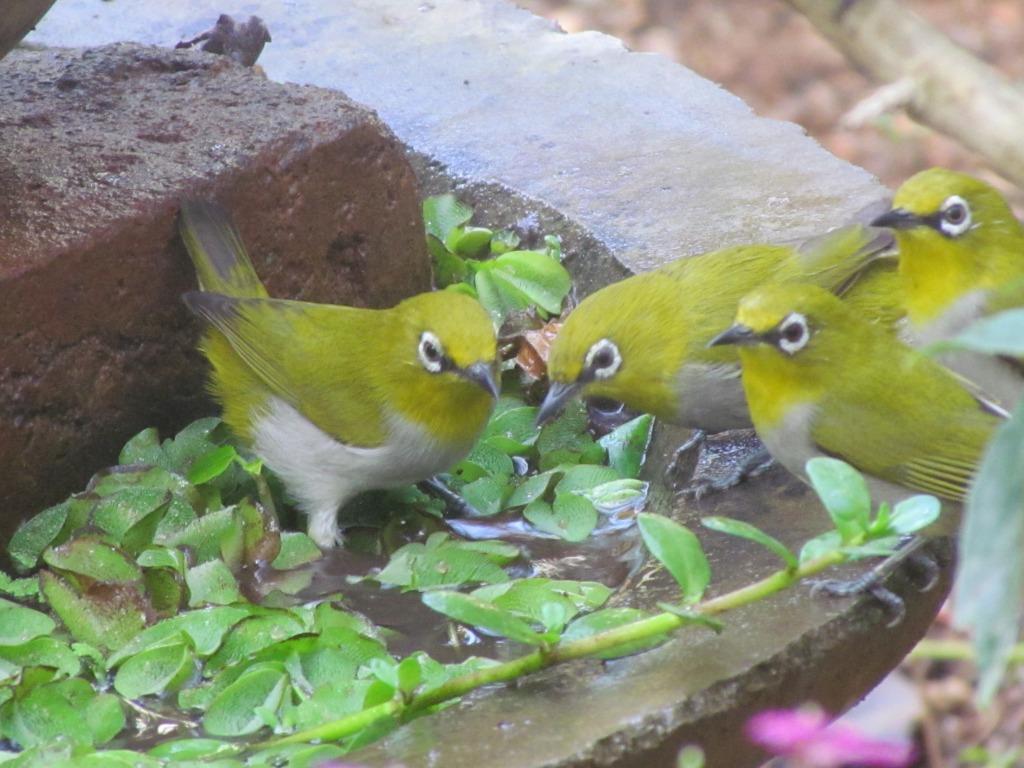
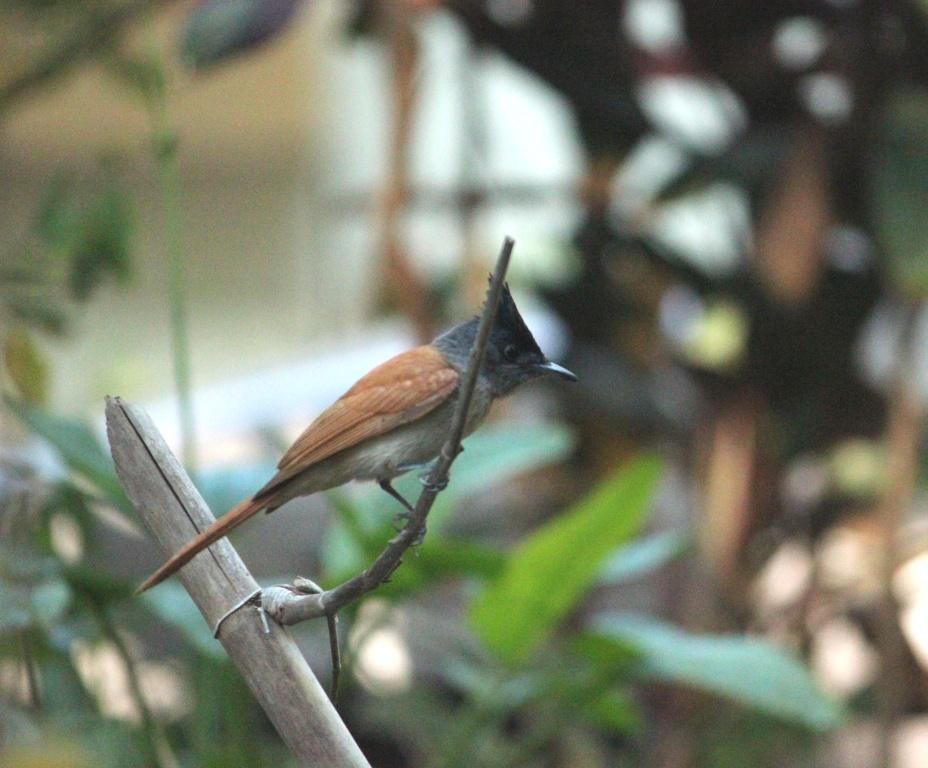
But what proved to be a game changer was an observation Bhat made one day immediately after a storm. “I saw a tailor bird bathing using the droplets of water on a leaf. So I started watering the leaves of my Ixora bush every day,” she reveals. Her effort paid rich dividends – it brought sunbirds, flycatchers, flowerpeckers, tailorbirds, warblers and other smaller birds by the dozens.
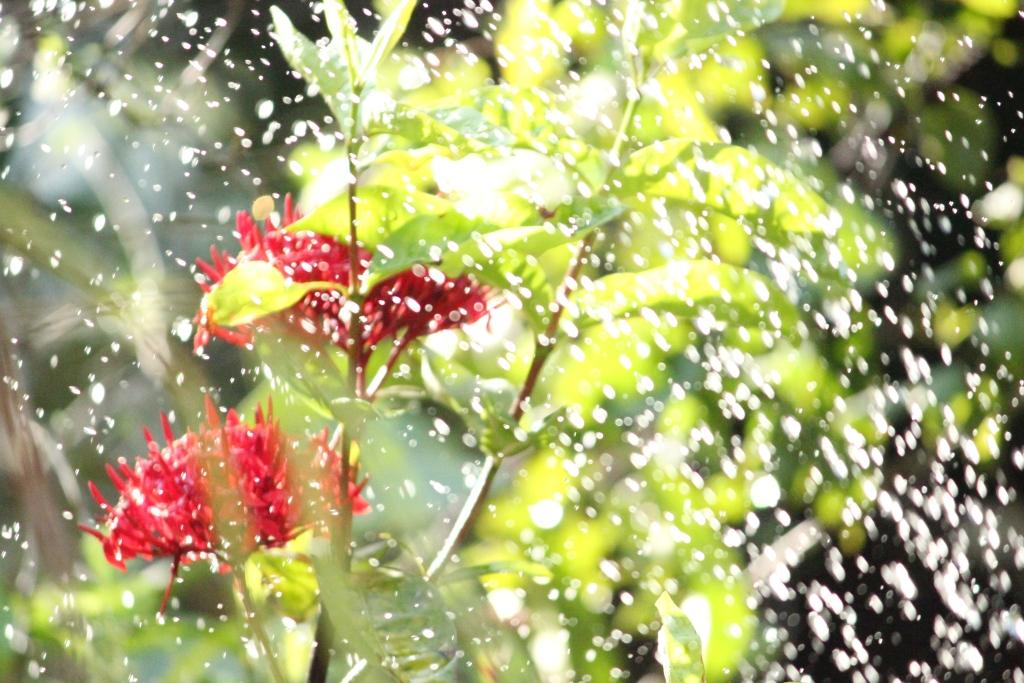
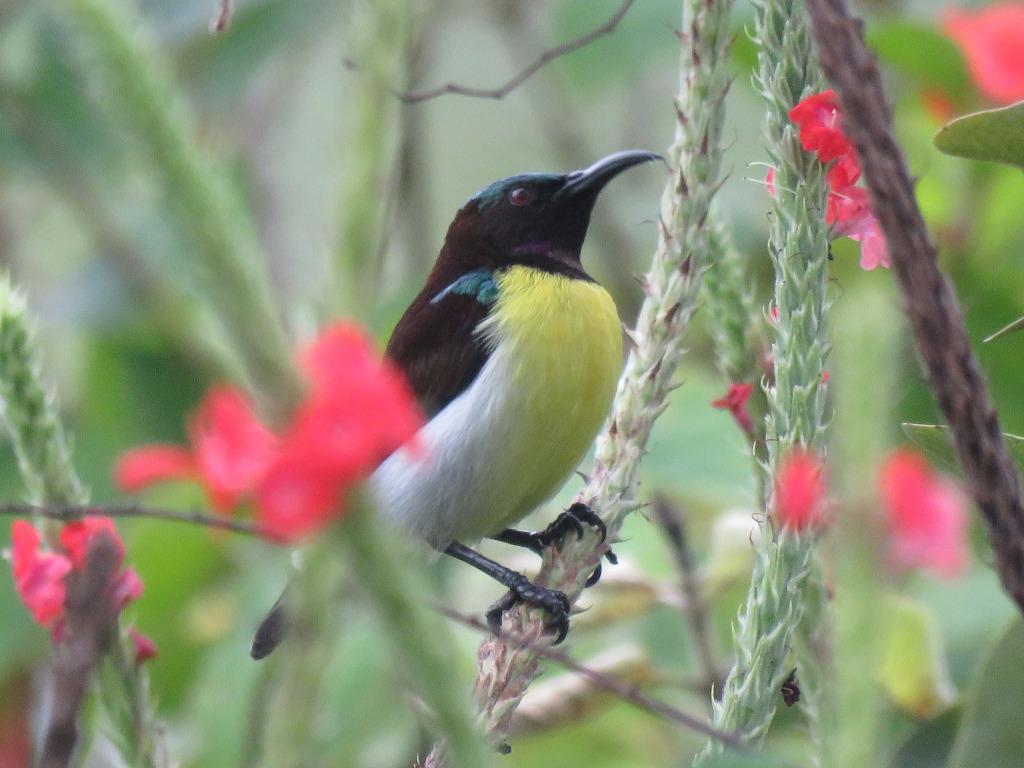
Bhat’s keen eyes noticed another similar behaviour that birds like orioles and starlings indulged in: they would use the morning dew captured by the leaves of trees to take a “dew bath”. She tried to replicate this by sprinkling water on the leaves of her mulberry tree. And it worked. Now these birds too could no longer resist the lure of her garden. It also helped Bhat that, by then, IISc had started providing recycled water for use in the gardens. She was now able to sprinkle water on all her plants at least twice a day, which she continues to do religiously. Some days though, she is more generous. “If I hear some calls, I’ll go out and water the bush, and immediately, they’ll come down,” she says.
“I saw a tailor bird bathing using the droplets of water on a leaf. So I started watering the leaves of my Ixora bush every day”

Rare visitors
Bhat has so far seen over 60 species of birds in her garden. In less than a couple of years after she started her experiments with birdbaths, her garden also became a rest stop for some rare visitors, including a few from far-off lands. “On 8 October 2013, at about 12.30 pm, I saw a bird with an unusual flight. I knew that I hadn’t seen this bird before. I went through my bird books and realised that it was the Kashmir flycatcher, a visitor from the Himalayas which had never been sighted in Karnataka before!” she says. “I’ve also seen other rare birds like Tickell’s thrush and ultramarine flycatcher, which are migrants from the north. Many of the rare birds I’ve seen are warblers: green warbler, Hume’s warbler, yellow-browed warbler, and Tytler’s warbler.”
In less than a couple of years after she started her experiments with birdbaths, her garden also became a rest stop for some rare visitors, including a few from far-off lands
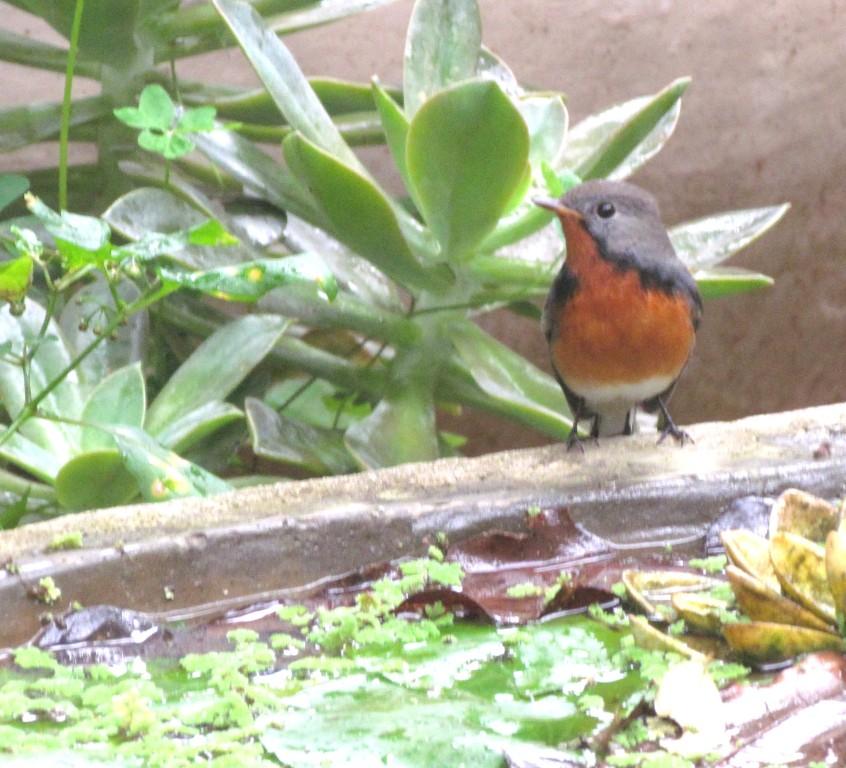
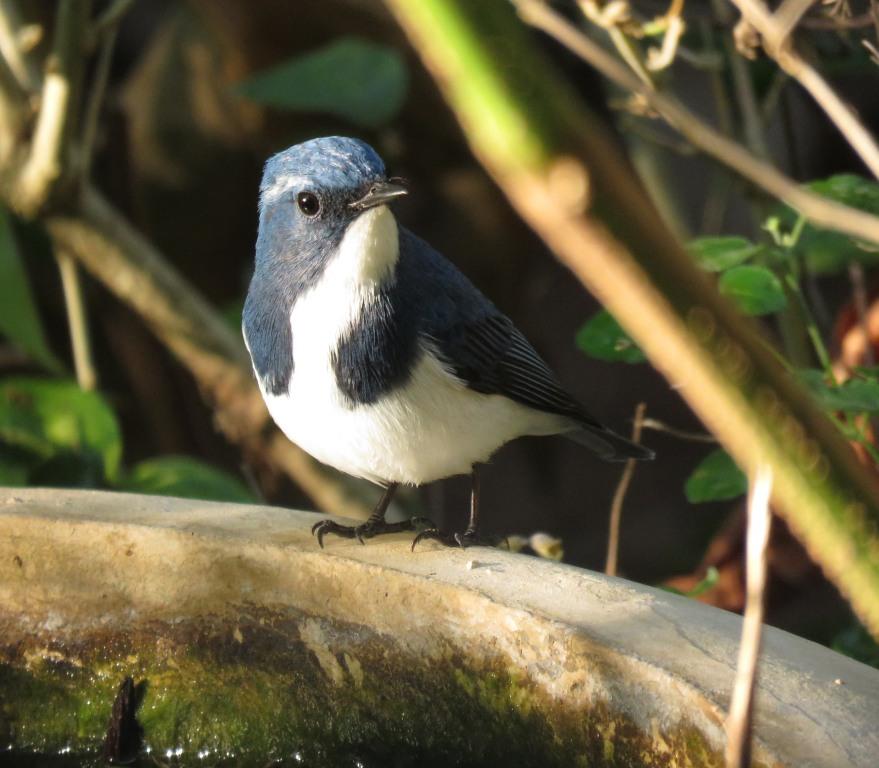
Interesting behaviours
What Bhat finds most exciting is to be able to see the intriguing behaviours of different bird species when they swing by to bathe or drink water. One of the first things she noticed was how a crow – her favourite bird as a child – would dip its dry chapatti in water before consuming its meal. “Then he would bathe in it, drenching himself,” she says with a laugh. “Each bird is different and each bird takes a bath differently. For instance, the coucal would come to the same place on the left side of the rim of the pot, walk in a semi-circle to the right side of the rim, and finally dive into the water for a swim. On the other hand, the kite, which I never expected to see, would sit in the birdbath like he’s sitting in his bath tub, cooling himself. And the Blyth’s reed warbler would sit on the perch, dip his head in water and sprinkle it all over himself,” she explains.
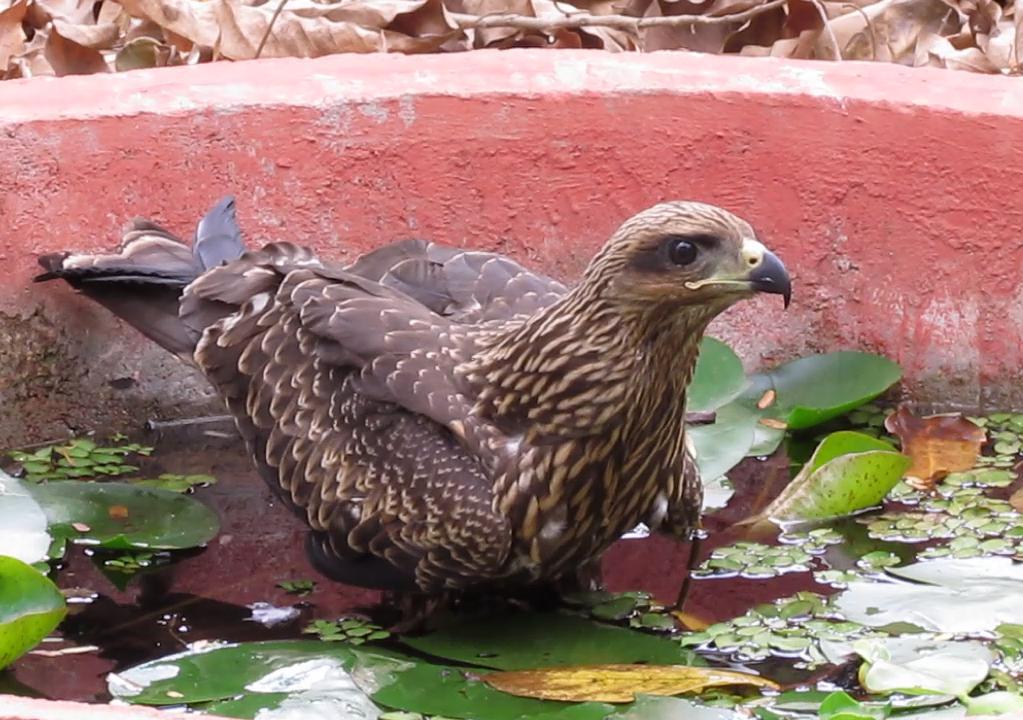

Bhat’s evangelism
Bhat’s infectious enthusiasm for this rewarding hobby has caught on among a few of her friends, both inside and outside the main campus of IISc. She is however keen that more people in cities do their bit to help birds with water, especially during the summers, and she insists that it doesn’t take much for one to make a start. “People can keep, even if it is in their balconies, just a bowl of water, with maybe a small plant next to it. Ideally it should be a native species that can hold water in its leaves and that has branches for birds to perch on,” she suggests.
“People can keep, even if it is in their balconies, just a bowl of water, with maybe a small plant next to it”
Here is a video clip of avian visitors to Bhat’s garden. Like most of her video recordings, this one includes strains of classical music playing from her radio, which is her constant companion as she peers at the birds through her kitchen window.




